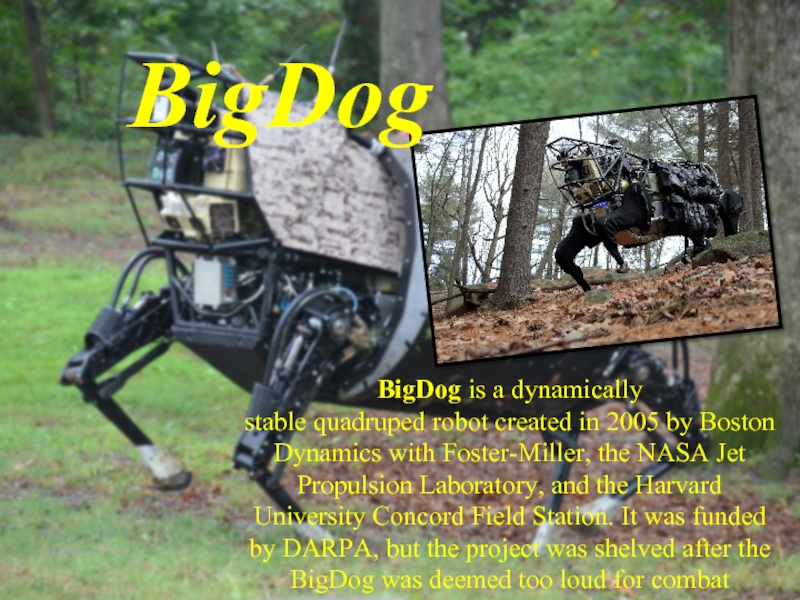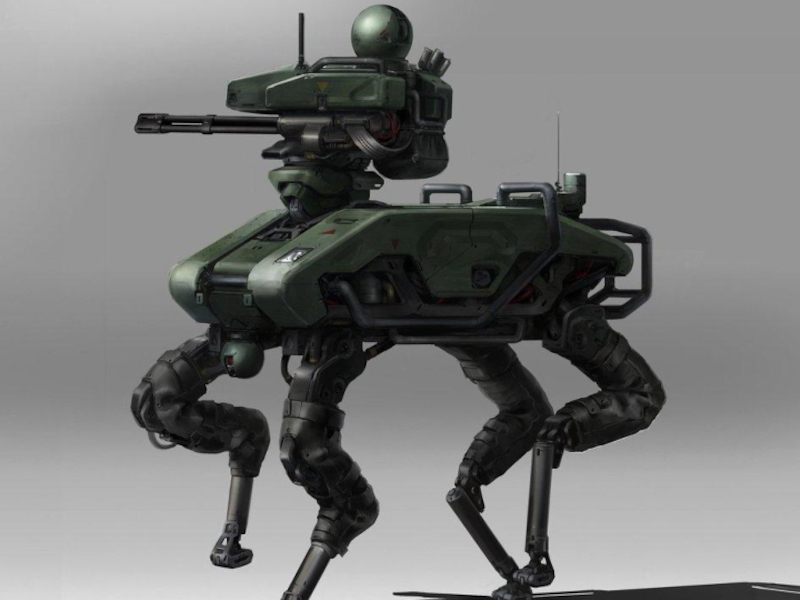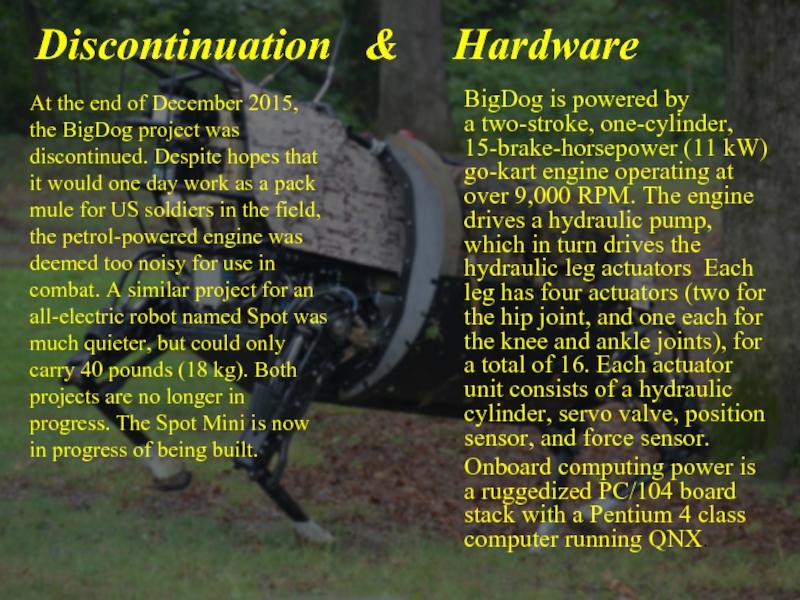- Главная
- Разное
- Дизайн
- Бизнес и предпринимательство
- Аналитика
- Образование
- Развлечения
- Красота и здоровье
- Финансы
- Государство
- Путешествия
- Спорт
- Недвижимость
- Армия
- Графика
- Культурология
- Еда и кулинария
- Лингвистика
- Английский язык
- Астрономия
- Алгебра
- Биология
- География
- Детские презентации
- Информатика
- История
- Литература
- Маркетинг
- Математика
- Медицина
- Менеджмент
- Музыка
- МХК
- Немецкий язык
- ОБЖ
- Обществознание
- Окружающий мир
- Педагогика
- Русский язык
- Технология
- Физика
- Философия
- Химия
- Шаблоны, картинки для презентаций
- Экология
- Экономика
- Юриспруденция
BigDog is a dynamically stable quadruped robot презентация
Содержание
Слайд 1BigDog
BigDog is a dynamically stable quadruped robot created in 2005 by Boston Dynamics with Foster-Miller, the NASA Jet Propulsion
Слайд 2History
BigDog was funded by the Defense Advanced Research
Projects Agency (DARPA) in the
At the end of February 2013, Boston Dynamics released video footage of a modified BigDog with an arm. The arm can pick up objects and throw them. The robot is relying on its legs and torso to help power the motions of the arm. The news writer supposed it can lift weights around 50 pounds (23 kg).
Слайд 3
Discontinuation &
At the end of December 2015, the BigDog project
Hardware
BigDog is powered by a two-stroke, one-cylinder, 15-brake-horsepower (11 kW) go-kart engine operating at over 9,000 RPM. The engine drives a hydraulic pump, which in turn drives the hydraulic leg actuators Each leg has four actuators (two for the hip joint, and one each for the knee and ankle joints), for a total of 16. Each actuator unit consists of a hydraulic cylinder, servo valve, position sensor, and force sensor.
Onboard computing power is a ruggedized PC/104 board stack with a Pentium 4 class computer running QNX.









